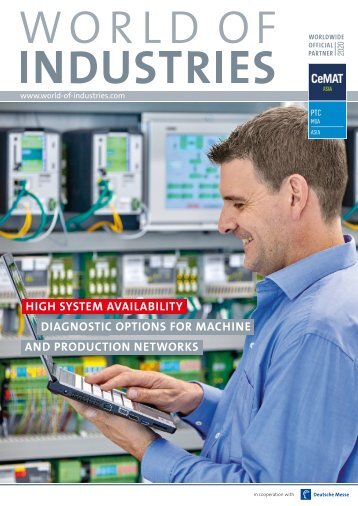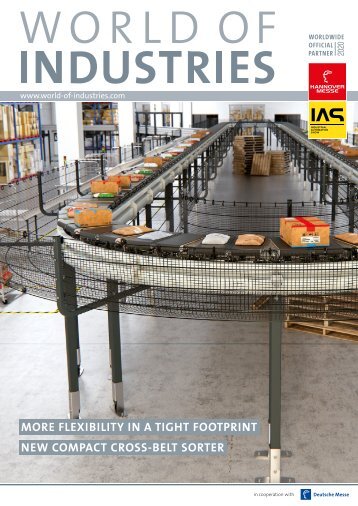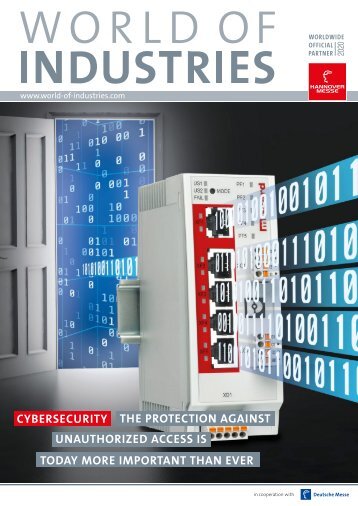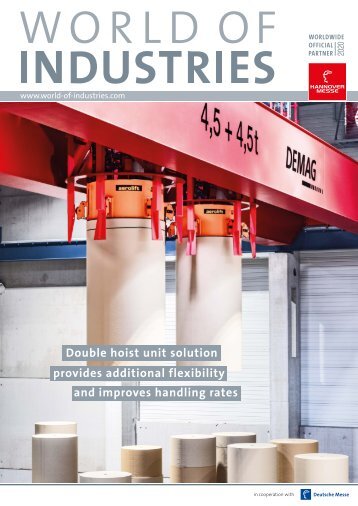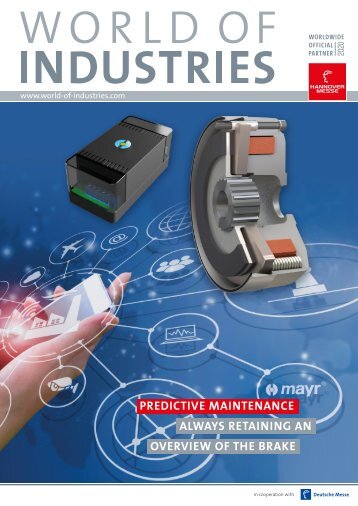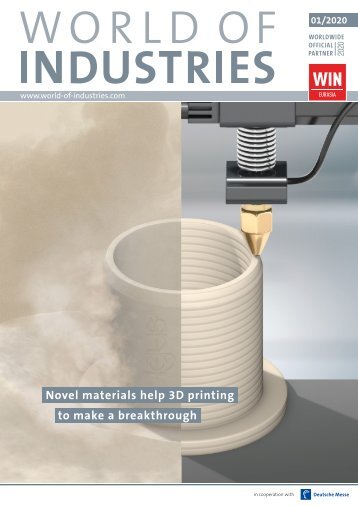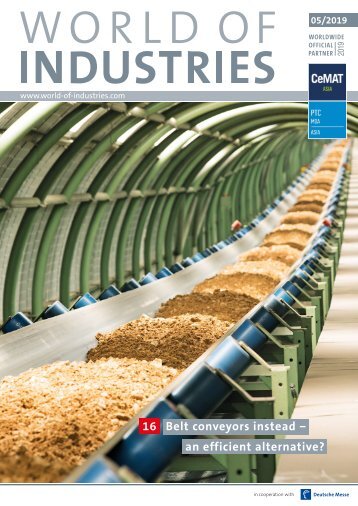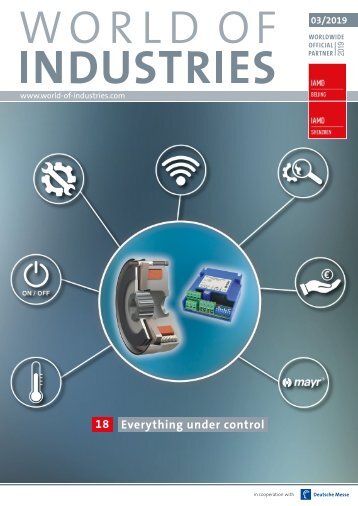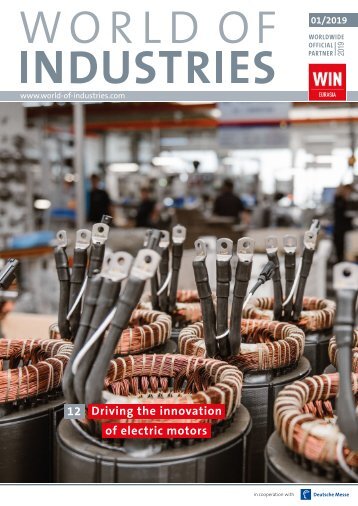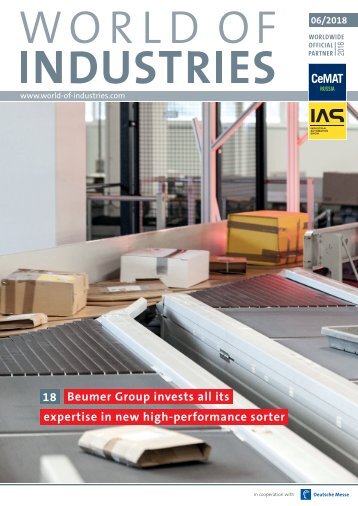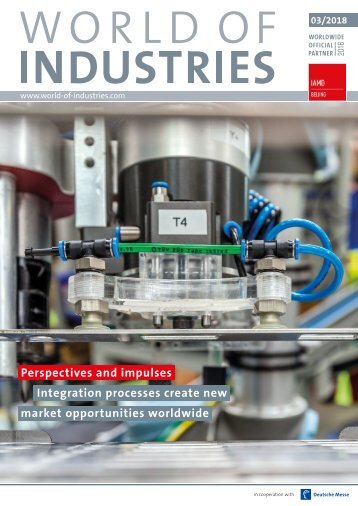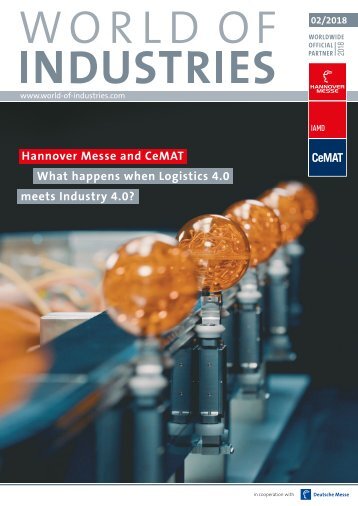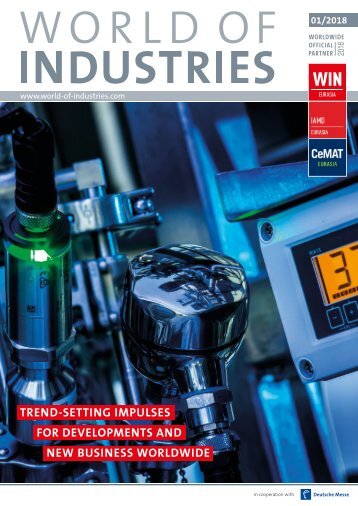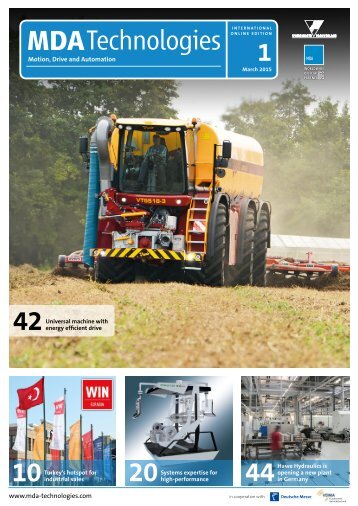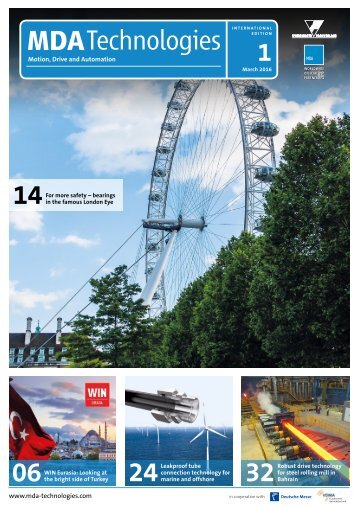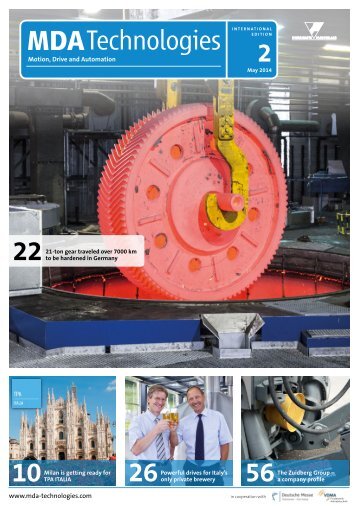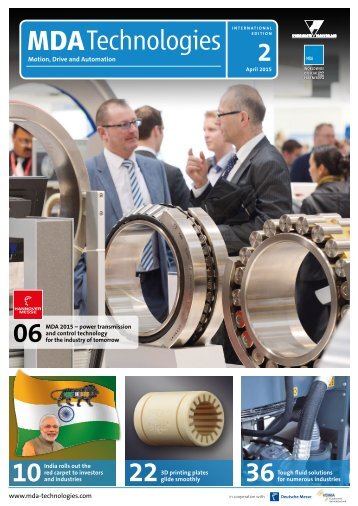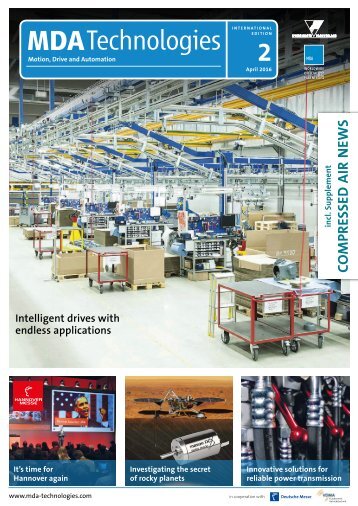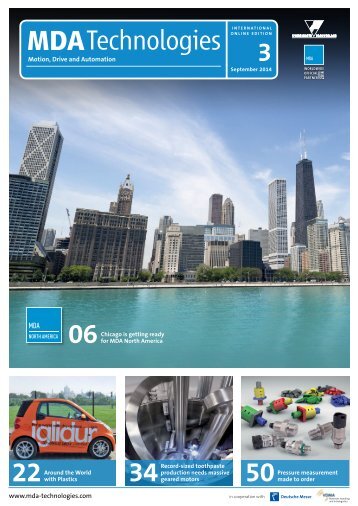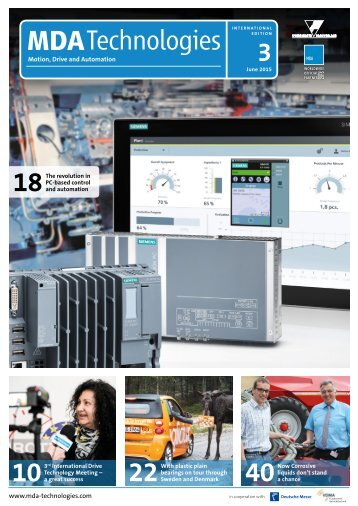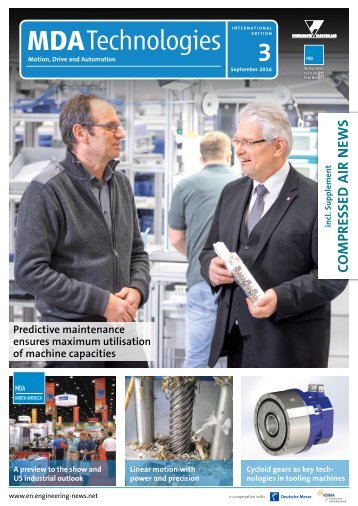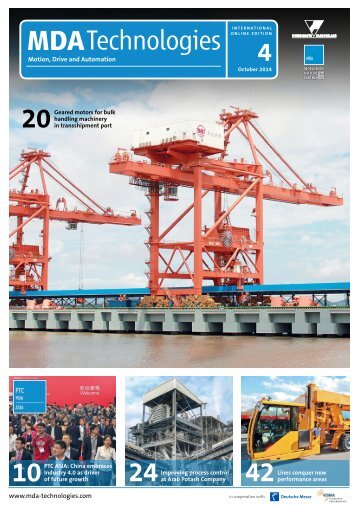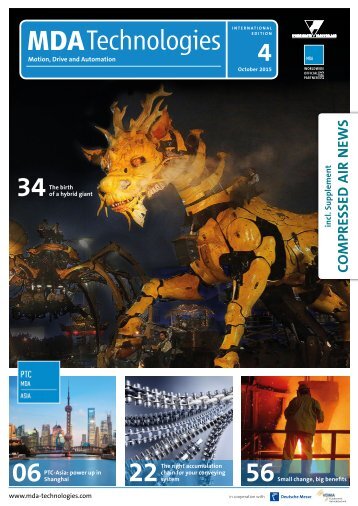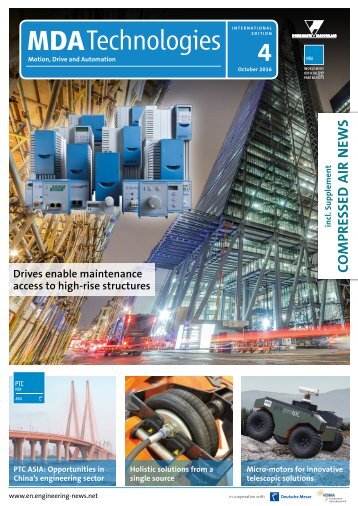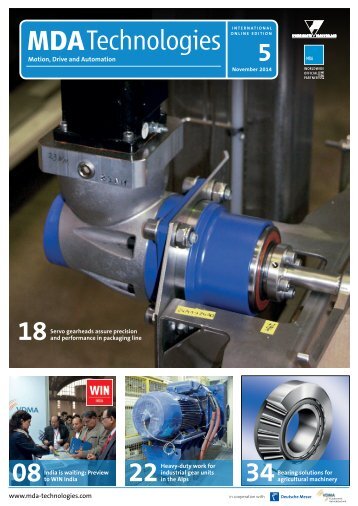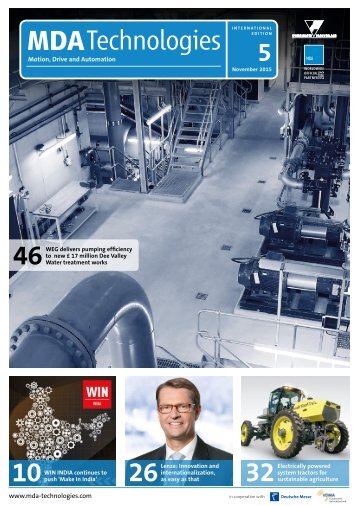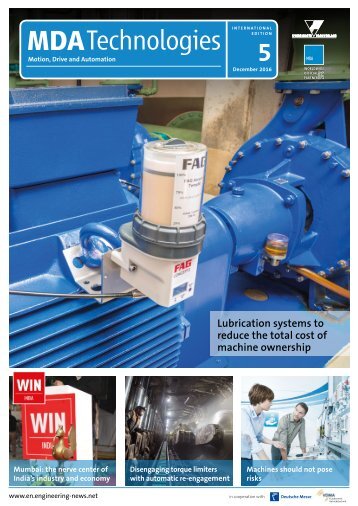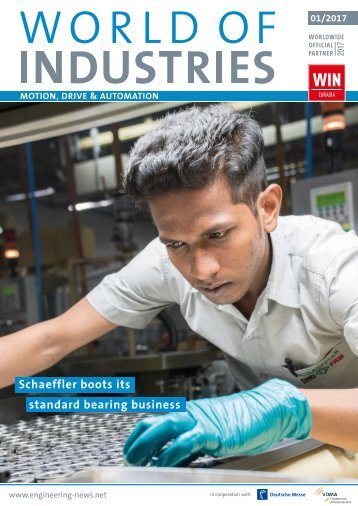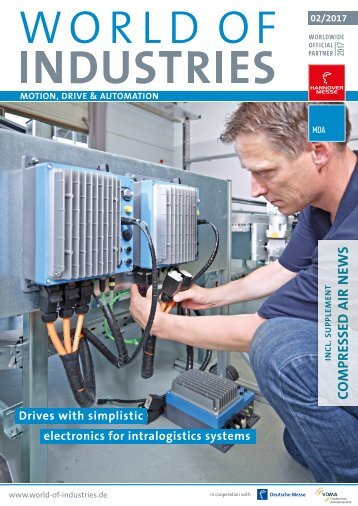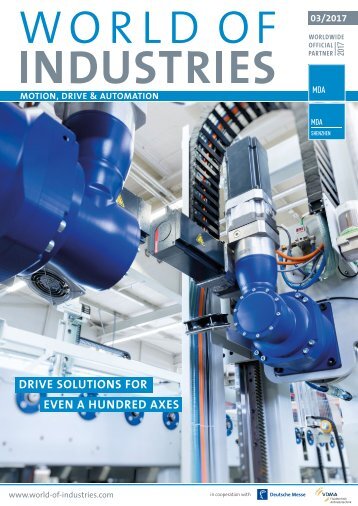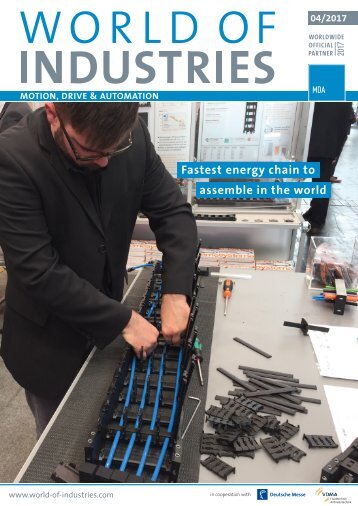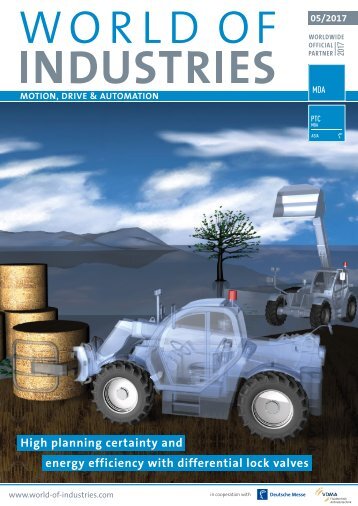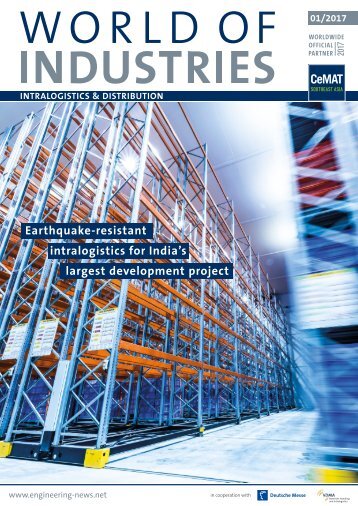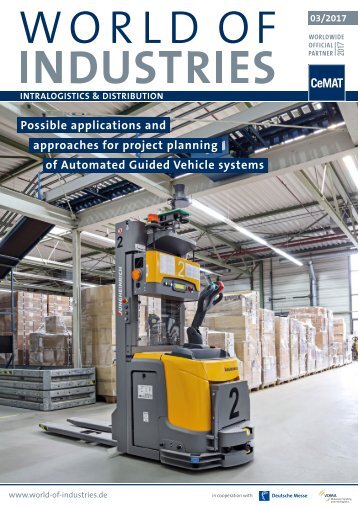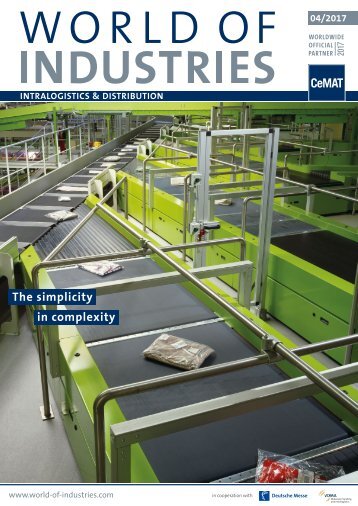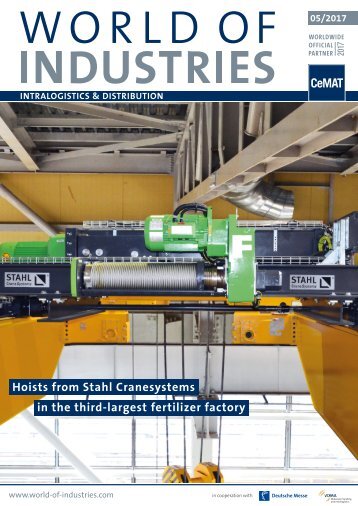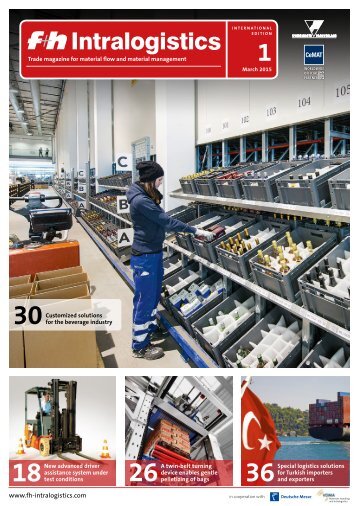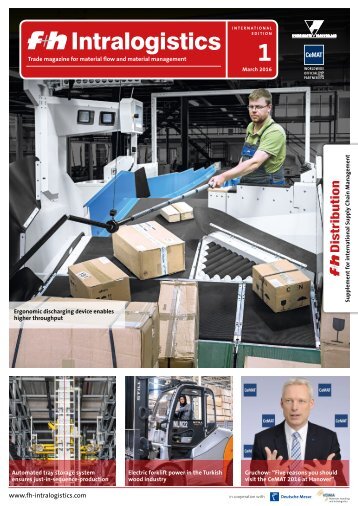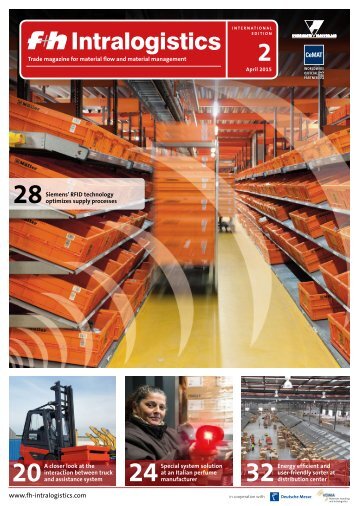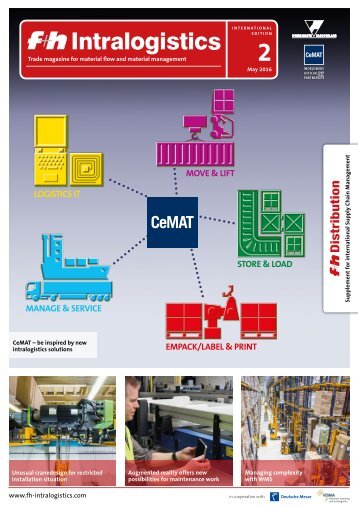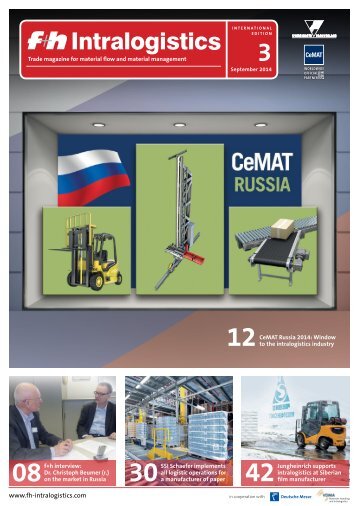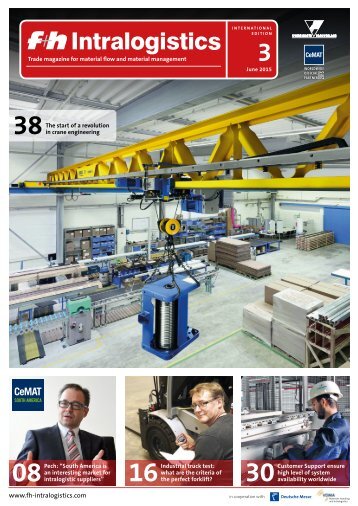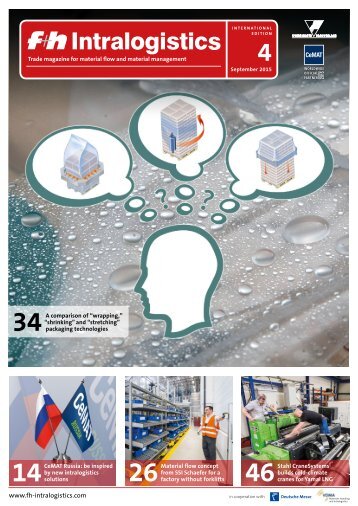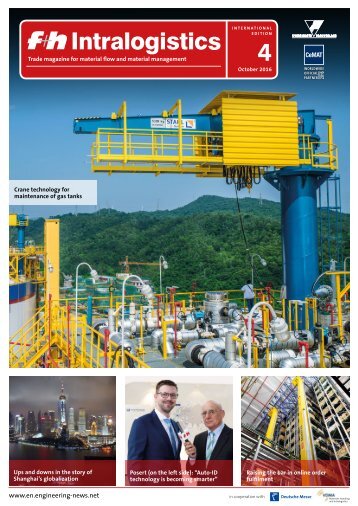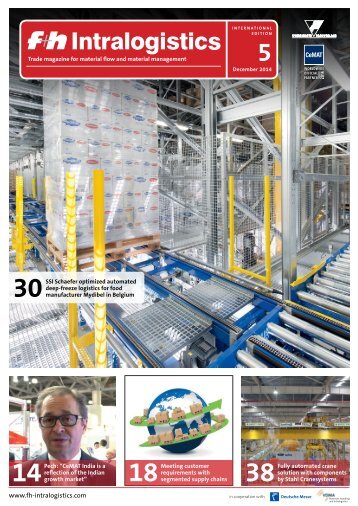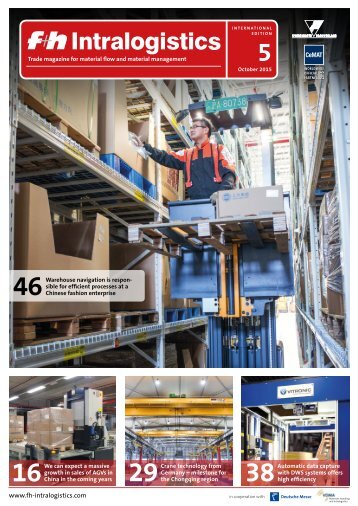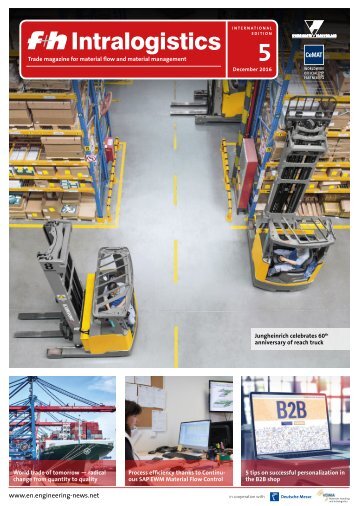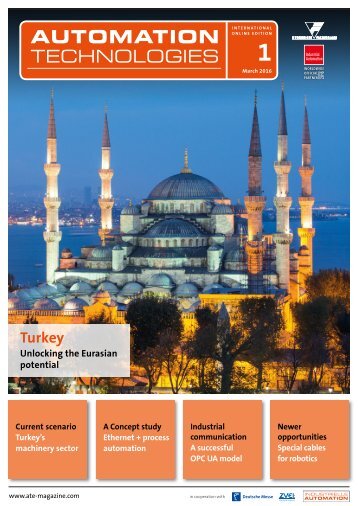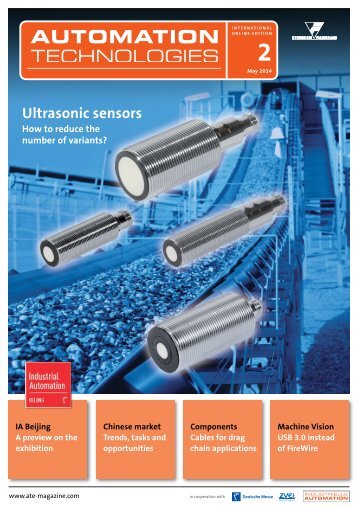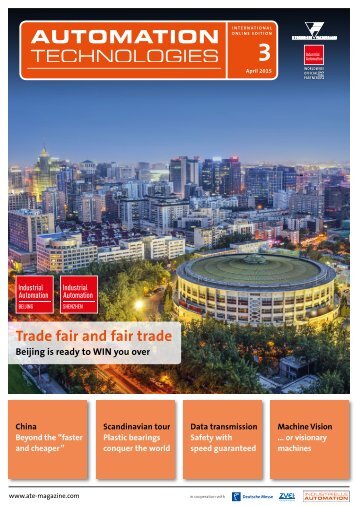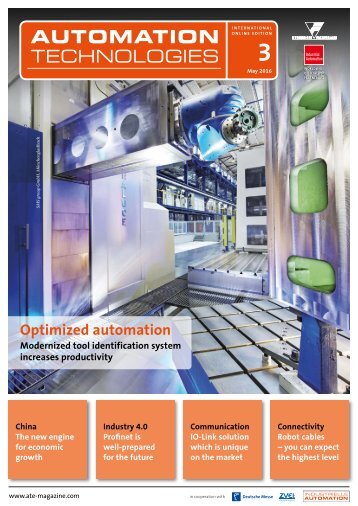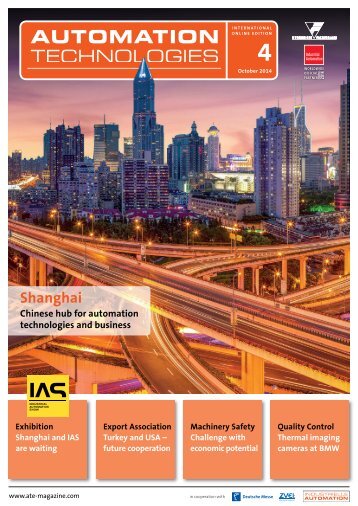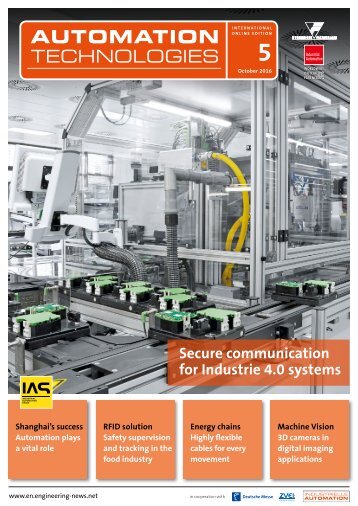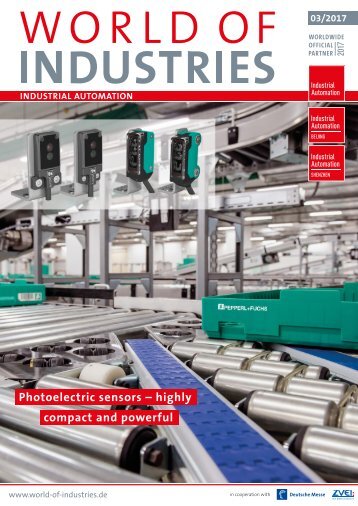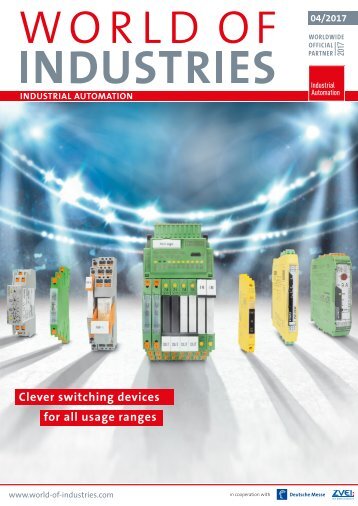WORLD OF INDUSTRIES - Industrial Automation 3/2017
- Text
- Industrial
- Automation
Author: Sebastian Pesch,
Author: Sebastian Pesch, Product Manager, Pepperl+Fuchs, Mannheim, Germany Optical subminiature sensors reduce space requirements but not performance SENSORS AND MEASUREMENT The subminiature sensors in the R2x and R3x series are one of the world’s space-saving solutions in the photoelectrics range. In addition to a high level of mounting flexibility, these sensors offer a number of features and functions that open up a host of new solution options. The R2, R3 and R2F, R3F subminiature series from Pepperl+Fuchs are characterized by maximum flexibility in sensor selection and high performance in minimum space requirements. These are important considerations in fields such as mechanical engineering and for integrators in the semiconductor, solar, and electronics industry, as well as for packaging, material flow technology, and handling technology. In these fields, the machines are becoming increasingly compact with greater power density. At the same time, there is a growing need for reliable detection of small and flat objects or of object edges that include some critical surface and reflection properties. In this demanding environment, the R2x and R3x subminiature series offer impressive versatility, maximum detection reliability, and application-oriented functionality. Light sensor or light barrier, cubic or flat… Sensors in a subminiature design are intended as solutions for tight installation spaces or for use in machinery. This is true of sensor versions with M3 connection technology as well as smaller M2 sensors in particular. “Simply” being a compact solution is not sufficient in every assembly situation. That is why the R2x and R3x series are available in a cubic housing with the optical face on the side and in an extra-flat housing with the optical face on the front. The user can also choose between sensors with red light LED and sensors with innovative DuraBeam laser technology. With diffuse mode sensors, thru-beam sensors, and retroreflective sensors, both sensor series cover all industry-standard functional principles in a standardized product design - but each version offers its own special highlights. Detection reliability for difficult backgrounds The diffuse mode sensors in the R2x and R3x series with LED transmitters offer impressive performance in practical operation by providing a sharply contoured light spot on the object and high-precision, color-independent background suppression. The geometric triangulation evaluation on the optical sensor chip itself enables the switch point to be adjusted accurately to the object. Even in the near range of the sensors, this means surfaces behind the object can be reliably suppressed in order to prevent incorrect switching or counting signals. This allows a reliable distinction to be made between flat packaging on a conveyor belt and the surface of the belt itself. Depending on the application in question, there is an additional advantage: The sensor can be configured and installed in place of a light barrier. There is no need to mount a reflector - as is the case for a retroreflective sensor - or a receiver - as is the case for a thru-beam sensor. This reduces installation work and - in the case of a thru-beam sensor - the work involved in precisely aligning and wiring the receiver. WORLD OF INDUSTRIES – INDUSTRIAL AUTOMATION 3/2017
01 Consistent functions in four formats Insensitive to reflections, glossy surfaces, extraneous light Reflections from film or PCB surfaces, glossy packaging, or incidence of extraneous light are all application or environmental conditions that can restrict the detection performance of photoelectric sensors and inhibit processing cycles or packaging processes. The miniature R2x and R3x retroreflective sensor series eliminate this risk as they have a polarization filter. This prevents any interfering light incidence on the receiver element so that the sensor can reliably detect reflective objects. For installation engineers and users, this significantly simplifies commissioning and maintenance, particularly in the tight installation situations that are typical for retroreflective sensors. They reduce the amount of sensor wiring required by replacing the thru-beam systems that would otherwise be needed with separate transmitters and receivers. Thru-beam sensors The R2x and R3x thru-beam sensors offer the option to adapt the switching threshold to the respective detection situation via teachin. This optimizes detection reliability and switch point accuracy as it prevents any switching to illuminated objects. When installing multiple thru-beam sensors in a confined space, the switching „The standardization of the R2x and R3x series is always appropriate to the application.“ threshold adjustment can be used to avoid cross-talk. This feature enables detection behavior to be adapted to difficult objects such as small parts, semi-transparent objects, or object front edges. 02 The subminiature sensors are ideal for detecting small objects with excellent precision the DuraBeam laser technology with its special beam profile always projects a sharply contoured, circular light spot onto an object, the R2F and R3F laser sensors are ideal for detecting small objects with excellent precision. Typical applications include edge detection of PCBs stacked in magazines, unloading of wafer carriers, pin detection and SMT component detection during PCB assembly, front edge detection of paper and cardboard in a wide range of processes, and detection and counting of small parts in assembly and handling technology. In all applications, the miniature series save time and money during engineering and optimize processes while achieving maximum reliability and machine availability. Photographs: Lead fotolia; 01-02 Pepperl+Fuchs www.pepperl+fuchs.com Laser Sensors A special highlight of both miniature series is their R2F and R3F laser versions in a flat housing. They are the flattest laser sensors of their type in the world. This is made possible by the DuraBeam transmitter technology developed and patented by Pepperl+Fuchs. This combines the benefits of LED emitters - including a long service life and suitability for use in an extended or increased temperature range - with the advantages of laser diodes, which include a large operating distance and a contoured, bright light spot shown on the object. These laser sensors thus offer significantly improved energy efficiency, a longer service life, and an extended operating temperature range, without compromising on detection performance. As About Pepperl+Fuchs Pepperl+Fuchs is a worldwide company with its headquarters in Mannheim, Germany. They manufacture products for Factory and Process Automation and are specialists in sensor manufacturing. With revenues more than € 500 million and nearly 5,600 employees worldwide (2015), the company has more than 40 foreign subsidiaries on six continents, and manufacturing facilities. WORLD OF INDUSTRIES – INDUSTRIAL AUTOMATION 3/2017
- Page 1 and 2: 03/2017 INDUSTRIAL AUTOMATION Photo
- Page 3 and 4: EDITORIAL High Priorities Dear read
- Page 5 and 6: Worldwide News B&R and Hyundai Heav
- Page 7 and 8: Imaging Experts Academy 2017 As glo
- Page 9 and 10: Nature of manufacturing industry ev
- Page 11 and 12: ponents manufacturing, machinery ma
- Page 13: Worldwide News Basler expects stron
- Page 17 and 18: 01 Best Crown filling machines equi
- Page 19 and 20: Two robots working in tandem Having
- Page 21 and 22: In the Web-based management of Sine
- Page 23 and 24: production capability to raw materi
- Page 25 and 26: Mr. Grispen and Mr. Rob Huting, co-
- Page 27 and 28: Precision thickness measurement usi
Inappropriate
Loading...
Mail this publication
Loading...
Embed
Loading...

